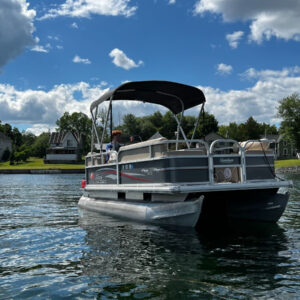The sinking of the RMS Titanic on the night of April 14–15, 1912, remains one of the most iconic maritime disasters in history. With a reputation as the “unsinkable ship,” the Titanic set sail on her maiden voyage from Southampton to New York, only to meet a tragic end in the icy waters of the North Atlantic after striking an iceberg. The disaster claimed over 1,500 lives, sparking global mourning and profound changes in maritime safety regulations. But amidst the immense loss, there were also stories of survival, heroism, and resilience. This blog aims to answer the question: How many people survived the Titanic?—while exploring the broader human context surrounding the numbers.
The Titanic’s Passenger and Crew Numbers
To understand the survival statistics, we must first look at how many people survived the Titanic? While exact numbers vary slightly between sources due to last-minute ticket purchases, cancellations, and crew assignments, it is widely accepted that the ship carried around 2,224 people.
This number includes:
-
Passengers: Approximately 1,317
-
Crew members: Around 907
Passengers were divided into three classes:
-
First Class: About 325 passengers
-
Second Class: Around 285 passengers
-
Third Class: Roughly 710 passengers
This division played a crucial role in the likelihood of survival, as we’ll explore later.
How Many Survived?
Of the estimated 2,224 people aboard the Titanic, only 706 survived the disaster. This means that approximately 31.8% of all those on board lived to tell the tale, while around 1,518 tragically perished in the freezing Atlantic.
Here is a basic breakdown of the survivors:
-
First Class: About 202 out of 325 (62%)
-
Second Class: Around 118 out of 285 (41%)
-
Third Class: Roughly 178 out of 710 (25%)
-
Crew: Approximately 208 out of 907 (23%)
The survival rate significantly varied based on class and role aboard the ship, highlighting the stark disparities of the time.
Why Did So Few Survive?
The Titanic was equipped with only 20 lifeboats, which could hold about 1,178 people—far less than the number on board. This shortfall was tragically legal under the maritime laws of the time, which had not been updated to account for larger passenger ships like the Titanic.
Several key factors contributed to the low survival rate:
-
Insufficient Lifeboats: The ship lacked enough lifeboat space for all passengers and crew.
-
Confusion and Delays: Many passengers, especially those in third class, were unaware of the emergency or delayed due to language barriers, physical barriers (locked gates), or lack of crew guidance.
-
“Women and Children First” Policy: This unwritten rule was applied unevenly. First-class women and children had much higher survival rates compared to those in third class.
-
Cold Water: The water temperature was around -2°C (28°F), meaning those who ended up in the ocean without lifeboats quickly succumbed to hypothermia.
-
Class Division: Access to the lifeboats was more available to first-class passengers. Many third-class passengers were physically restricted from reaching the deck in time.
Survival Rates by Demographics
Women and Children:
-
First-Class Women: 140 out of 144 survived (~97%)
-
Third-Class Women: 76 out of 165 survived (~46%)
-
Children (Overall): 56 out of 109 survived (~51%)
-
Children in First/Second Class: Almost all survived
-
Children in Third Class: 17 out of 76 survived (~22%)
Men:
-
First-Class Men: Only 57 out of 175 survived (~33%)
-
Third-Class Men: Only 75 out of over 450 survived (~17%)
-
Crewmen: 192 out of 885 survived (~22%)
These statistics show that social class and gender norms of the early 20th century heavily influenced survival chances.
Notable Survivors
The Titanic’s legacy lives on in part due to the compelling personal stories of its survivors. Some of the most well-known include:
-
Molly Brown: Nicknamed “The Unsinkable Molly Brown,” this American socialite helped command Lifeboat No. 6 and assisted in rescue efforts.
-
Eva Hart: A seven-year-old girl at the time, Eva later became one of the most vocal Titanic survivors, advocating for better maritime safety.
-
J. Bruce Ismay: Chairman of the White Star Line, Ismay survived but faced heavy criticism for leaving the ship while so many perished.
-
Millvina Dean: The youngest passenger at just 2 months old, she lived until 2009 and was the last surviving Titanic passenger.
Lifeboat Survivals
Of the 20 lifeboats:
-
Only a few were filled to capacity.
-
Some were launched with fewer than 30 people despite having a capacity of 65.
-
Lifeboat No. 1, dubbed the “Millionaire’s Boat,” carried only 12 people—7 of them crew and 5 first-class passengers.
This mismanagement of lifeboats is often criticized as one of the key failings during the evacuation process.
The Aftermath and Legacy
The tragedy of the Titanic led to widespread public outrage and demands for change. As a result, several important reforms were introduced:
-
International Convention for the Safety of Life at Sea (SOLAS): Enacted in 1914 to require ships to carry enough lifeboats for all aboard and conduct regular safety drills.
-
Improved Ice Patrols: The International Ice Patrol was established to monitor iceberg threats in the North Atlantic.
-
Radio Reforms: Ships were now required to maintain 24-hour radio contact.
Conclusion
The sinking of the Titanic is not just a story of tragedy—it is also one of enduring human stories, profound loss, and historic reform. Out of the 2,224 people aboard, only 706 survived, and their lives were forever shaped by the ordeal. The Titanic continues to fascinate and teach us over a century later—not just through its grand design or tragic fate, but through the very human stories of those who lived, those who died, and the lessons we carry forward.








